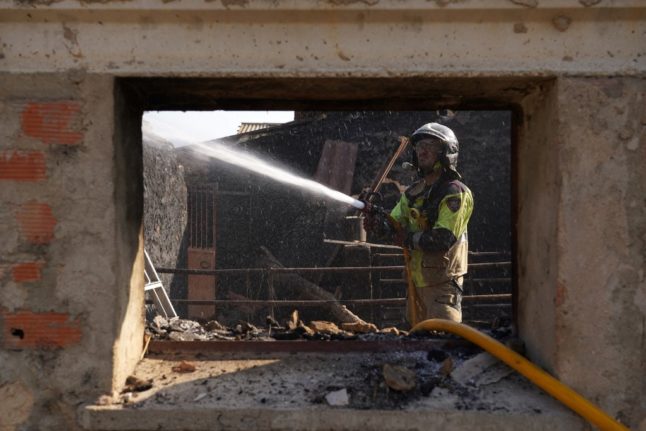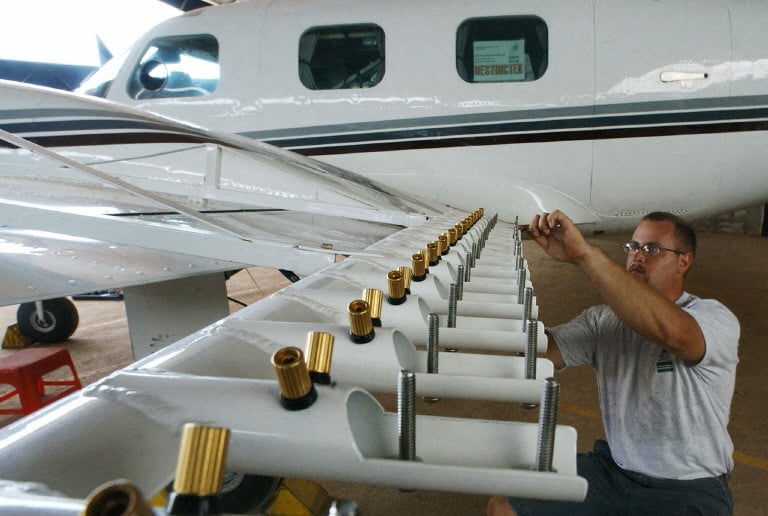A record-breaking heatwave and historically low rainfall have combined to cause wildfires across Spain this summer, with thousands of hectares burned in southern Extremadura and as far north as Asturias.
This week the eastern Valencia region has struggled with two major fires. In Bejís, 70 kilometres northwest of Valencia, strong winds contributed to spread the blaze which has so far burnt up 10,000 hectares of land and forced the evacuation of 1,500 people.
READ MORE:
- Firefighters battle to control huge wildfire in Spain’s Valencia region
- Are Spain’s wildfires a risk to people’s health?
In the south of the region, another fire began when lightning hit the Vall d’Ebo area in Alicante province late on Saturday night. Like in Bejís, strong winds caused the blaze to spread and burned 11,000 hectares. The fire has forced the evacuation of more than 1,000 people, according to Valencia’s regional government.
In the Vall d’Ebo, locals were evacuated from the municipalities of Famorca, Facheca, Tollos, Beniaia, Benimassot, Benirrama and Beniali.
In Bejís, the municipalities of Toràs, Bejís, Sacañet and Teresa were evacuated.
However stormy weather overnight has offered some respite to locals and firefighters and emergency services tackling the blazes. In Bejís, rains have helped party extinguish the flames, and down in Alicante heavier rain has all but done the job of the fire brigade for them.
Between 14 and 20 litres of rain per square metre were recorded overnight in Bejís, which have significantly reduced the flames firefighters are facing, and in Alicante, around 40 litres/sqm of rain in 12 hours allowed emergency services to confirm on the morning of August 18th that there were no longer any active flames in the Alicante area.
READ ALSO: What to do and what to avoid if you witness a forest fire in Spain
“The perimeter is more stable after the rainfall. There has been a small reproduction in the Benimassot area, but it is already controlled,” emergency services said.
The entire Valencian Community remains on extreme alert level due to the risk of forest fires throughout the region.
Wildfire season
So far this year, Spain has suffered 391 wildfires, fuelled by scorching temperatures and drought conditions, which have destroyed a total of 271,020 hectares of land, according to the latest figures from the European Forest Fire Information System.
This year’s fires in Spain have been particularly devastating, destroying more than three times the area consumed by wildfires in the whole of 2021, which amounted to 84,827 hectares, the figures show.
Scientists say human-induced climate change is making extreme weather events, including heatwaves and droughts, more frequent and intense. They in turn increase the risk of fires, which emit climate-heating greenhouse gases.
READ MORE: ‘Thousands of hectares’ destroyed by wildfire in Spain
Fires have blazed across Europe, particularly in France, Greece and Portugal, making 2022 a record year for wildfires on the continent.
In Portugal, a wildfire brought under control last week reignited Tuesday in the UNESCO-designated Serra da Estrela natural park, the civil protection agency said.




 Please whitelist us to continue reading.
Please whitelist us to continue reading.
Member comments